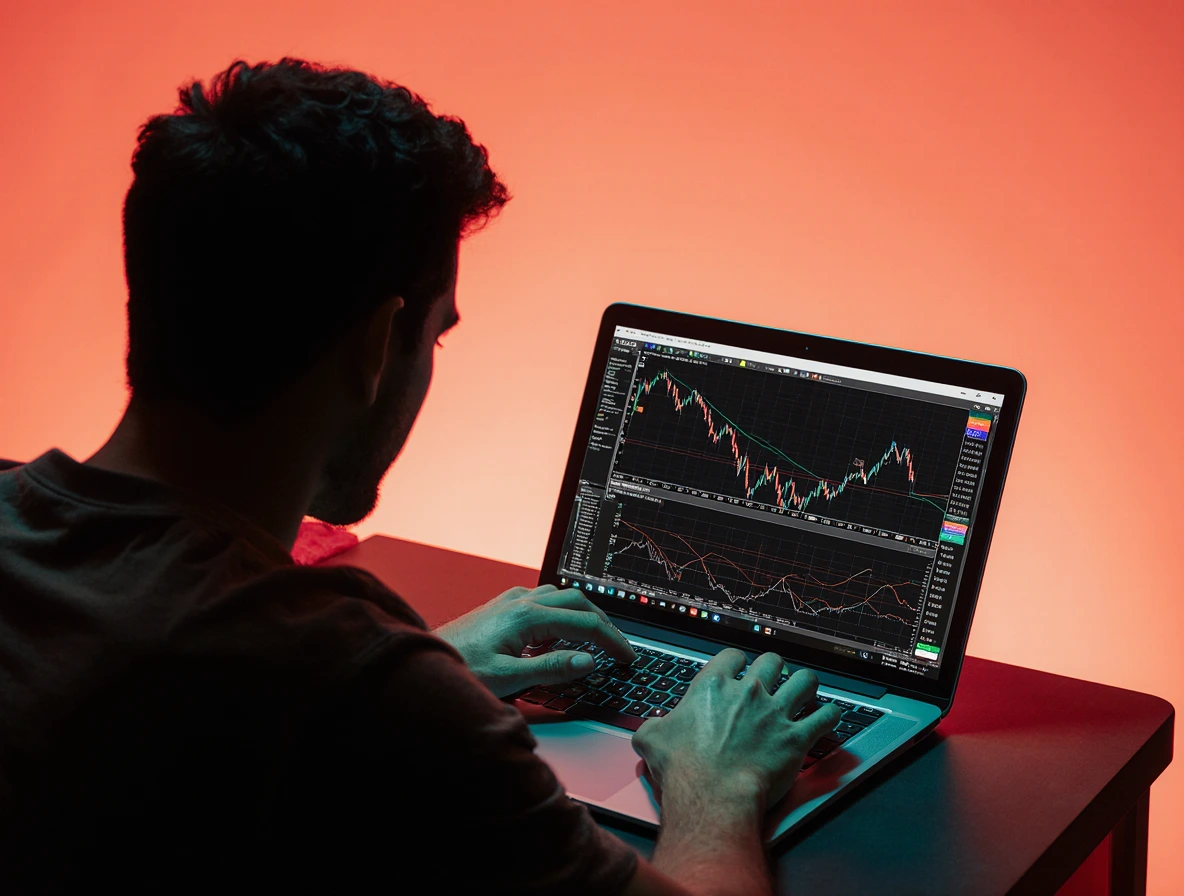
What Is a Trade Signal? Key Concepts Explained
Signals are any sort of indication — visual, numeric, or audible — which gives you the perfect timing to enter or exit a position on a financial market. You can imagine a signal as a trading compass that converts a mountain of data into a very concise action plan. They either show up as an alert on your screen, SMS alert, or an automated triggering of an order. That takes away all the emotional static, so that your decisions are fully in line with objective, mechanical triggers. For the beginner, signals enhance the complexity of the markets; for the seasoned, they improve timing and consistency.
How Trade Signals Are Generated: Algorithms, Data Inputs & Alerts

Trade signals emerge from a mix of quantitative rules and real‑time inputs. Let’s dive deeper:
Technical Analysis–Based Signals
Using price charts and statistical indicators, this method flags setups like moving‑average crossovers, Bollinger Band squeezes, or RSI divergence. For example, when a security’s RSI dips below 30 and then rebounds above it, many systems interpret this as a reversal cue, triggering an entry signal.
Fundamental Analysis–Based Signals
These signals draw on economic reports and corporate disclosures. An earnings surprise — say, revenue beating estimates by 10% — might automatically generate a bullish alert. Similarly, a central‑bank rate cut announcement can produce immediate buy signals in forex pairs.
AI & Machine‑Learning–Driven Signals
By training on years of historical data, machine‑learning models detect nuances invisible to rule‑based systems. They may combine price action with unconventional inputs — social‑media sentiment, satellite imagery of retail parking lots, or supply‑chain shipment volumes — to deliver probabilistic alerts backed by statistical confidence scores.
Manual vs. Automated Signal Creation
- Manual Signals: Crafted by veteran analysts who blend chart reading with macro insights. These signals often carry qualitative commentary, explaining the “why” behind each alert.
- Automated Signals: Governed by hard-coded rules that trigger instantly when conditions are met. Perfect for high‑frequency contexts, they eliminate human lag and ensure 24/7 market coverage.
Most traders adopt a hybrid approach: use automated alerts for speed, then apply manual filters — like news checks or pattern validation — before executing.
Types of Trade Signals and Their Applications
Different strategies call for different signal types:
Entry and Exit Signals
These are your bread‑and‑butter alerts. An entry signal might fire when price breaks past a key resistance level on high volume. An exit signal could alert you when price closes below your moving‑average stop or hits a profit‑target order.
Trend‑Following Signals
Engineered to capture multi‑period momentum. They rely on indicators like the Average Directional Index (ADX) or Parabolic SAR to identify and ride sustained moves, helping you stay in winners longer.
Mean‑Reversion Signals
Mean‑reversion assumes prices oscillate around a long‑term average. When an asset strays too far — say, more than two standard deviations from its mean — signals flag a probable bounce, offering counter‑trend entry points.
Breakout & Momentum Signals
Detect sudden surges in volatility and volume, indicating a breakout from consolidation. A Volatility Ratio spike combined with a price breakout often yields strong, swift moves — ideal for momentum traders.
Benefits of Using Trade Signals in Your Strategy
- Clarity & Discipline: Remove guesswork and curb emotional bias, reinforcing strict adherence to your plan.
- Speed & Precision: Instantaneous alerts help you capitalize on fleeting opportunities, especially in fast-moving markets.
- Consistency: Enforce uniform rules across every trade, reducing erratic performance swings.
- Scalability: Monitor dozens of markets or instruments without missing a critical setup.
Incorporating signals can also streamline your workflow: instead of constant monitoring, you receive targeted alerts and can focus on execution and risk management.
Risks and Limitations of Trade Signals
No system is foolproof. Recognize these pitfalls:
Over‑Reliance & Signal Lag
Automated signals may trail actual price action. If a signal generator uses end‑of‑bar calculations, you could miss the initial move, entering too late.
Data Quality & Latency Issues
Subpar data feeds or high latency can lead to delayed or incorrect signals, especially critical in ultra‑fast environments like FX or futures.
Market Volatility & Unexpected Events
Historic patterns break during crises. Black‑swan events — geopolitical shocks, flash crashes — often render algorithmic signals obsolete or highly error‑prone.
Personalization & Contextual Fit
A one‑size‑fits‑all signal rarely suits all traders. Your risk tolerance, capital base, and preferred instruments must inform how you tweak thresholds, timeframes, and filters.
Choosing a Reliable Trade Signal Provider
Selecting a provider demands rigorous vetting:
Performance Track Record
Seek audited, verifiable track records covering bull, bear, and sideways markets. Beware cherry‑picked “best months.”
Transparency & Strategy Disclosure
The best services explain their core logic — whether moving‑average crossovers, machine‑learning classifiers, or macro‑event triggers.
Technology & Execution Speed
Low-latency infrastructure and direct-market access are crucial. Some providers even integrate with broker APIs to auto-execute signals. Many providers also offer plugins or direct integration with platforms like Metatrader5 (MT5), enabling seamless signal delivery to expert advisors and automated order execution on both desktop and mobile clients.
User Reviews & Reputation
Forums, social‑media groups, and independent reviewer sites supply users with the real‑life quality of the service — frequency of signals, rate of false alerts, retaliation to support requests.
Pricing & Subscription Models
Flat-fee versus performance-based models: and one should be assured that costs do not outweigh the edge he expects from the signals; be wary of hidden charges or long-term binding contracts.
Integrating Trade Signals with Your Trading Strategy
They are signals and hence augment — and do not overstep — your big picture:
Aligning Signals with Your Trading Objectives
Scalpers want ultra-short-term triggers; swing traders, multi-day ones. Match signal cadence and timeframe to your profile.
Risk and Capital Management
Attach stop-loss and position sizing rules to each alert. Most traders risk 1% to 2% of their capital per trade and size up or down based on their confidence in the signal.
Diversification and Back-Testing
Back-test signals in different asset classes — equities, forex, commodities — just to be sure they hold under different scenarios. Back-testing over alternate market regimes will reveal hidden biases..
Continuous Monitoring and Optimization
Set regular review intervals — monthly or quarterly — to analyze signal hit‑rate, average return per trade, and worst drawdowns. Refine parameters or rotate in new signal streams as needed.
Regulatory & Compliance Considerations
Don’t overlook legalities:
Regulated vs. Unregulated Providers
Stick with providers overseen by bodies like the FCA, SEC, or ASIC. Unregulated services may lack accountability or proper disclosures.
Compliance with Disclosure Policies
Ensure any paid or affiliate‑link signals come with clear disclaimers and conflict‑of‑interest statements, per MiFID II or FINRA guidelines.
Industry Best Practices & Standards
Adopt codes of ethics (e.g., NFA’s Interpretive Notice on Trading Systems) and participate in trader‑community forums to stay current on evolving norms.
Why Choose Your Brand for Trade Signals
At Your Brand, we blend quantitative rigor with trader insights. Our multi‑model approach fuses technical rules, fundamental triggers, and AI‑enhanced analytics. You’ll receive clear, timely alerts — plus in‑depth commentary and risk‑management guidance — to elevate your edge and confidence.
Final Thoughts & Next Steps
Trade signals can revolutionize your approach — but only when paired with disciplined execution. Start by demo‑trading a signal suite for at least 50–100 trades, meticulously logging outcomes. Calibrate rules to your style, integrate robust risk controls, and stay informed on market drivers. From algorithms crunching data behind the scenes to actionable alerts in your inbox, mastering trade signals puts you firmly in control of your trading journey.







